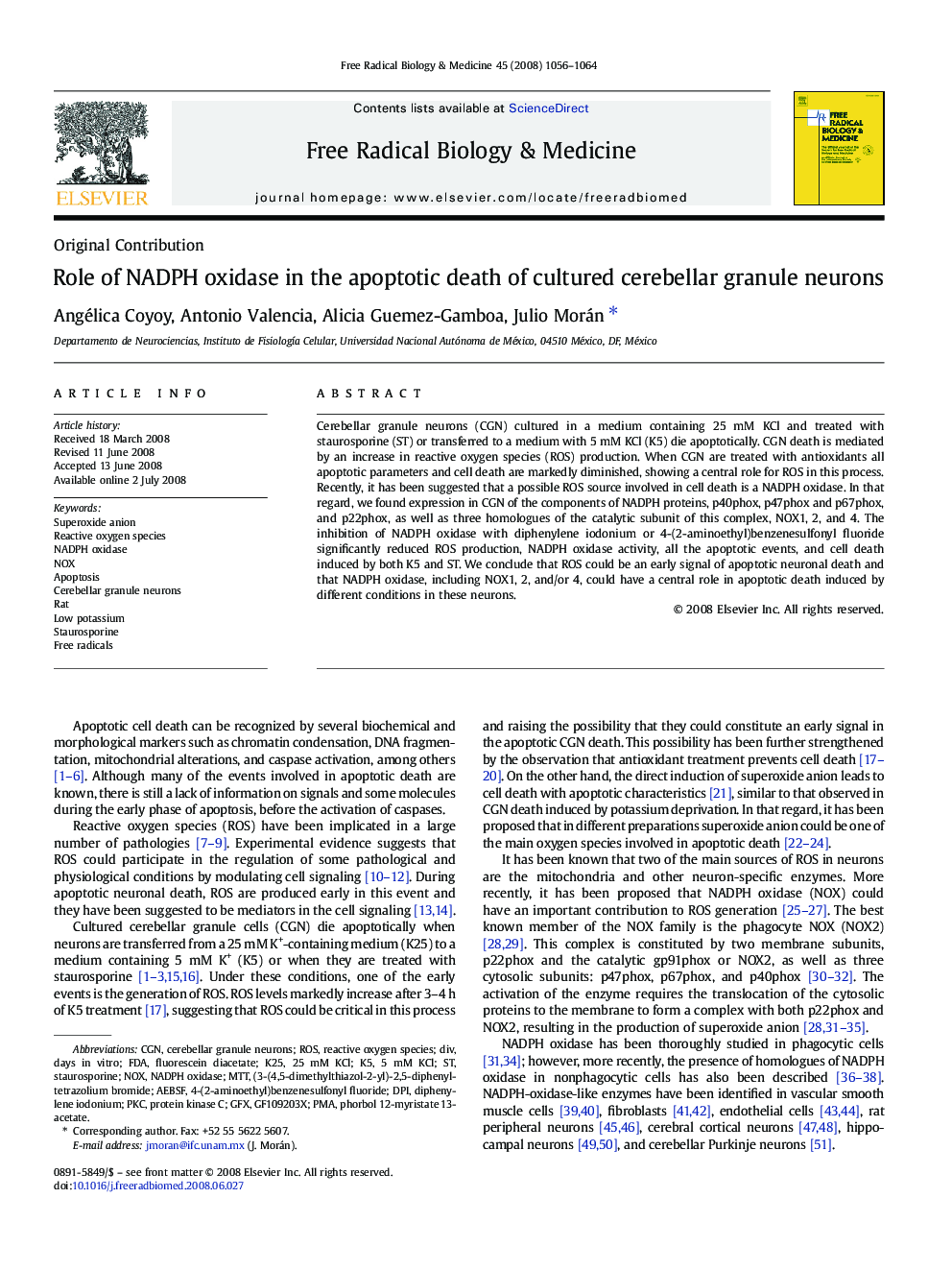| Article ID | Journal | Published Year | Pages | File Type |
|---|---|---|---|---|
| 1910548 | Free Radical Biology and Medicine | 2008 | 9 Pages |
Cerebellar granule neurons (CGN) cultured in a medium containing 25 mM KCl and treated with staurosporine (ST) or transferred to a medium with 5 mM KCl (K5) die apoptotically. CGN death is mediated by an increase in reactive oxygen species (ROS) production. When CGN are treated with antioxidants all apoptotic parameters and cell death are markedly diminished, showing a central role for ROS in this process. Recently, it has been suggested that a possible ROS source involved in cell death is a NADPH oxidase. In that regard, we found expression in CGN of the components of NADPH proteins, p40phox, p47phox and p67phox, and p22phox, as well as three homologues of the catalytic subunit of this complex, NOX1, 2, and 4. The inhibition of NADPH oxidase with diphenylene iodonium or 4-(2-aminoethyl)benzenesulfonyl fluoride significantly reduced ROS production, NADPH oxidase activity, all the apoptotic events, and cell death induced by both K5 and ST. We conclude that ROS could be an early signal of apoptotic neuronal death and that NADPH oxidase, including NOX1, 2, and/or 4, could have a central role in apoptotic death induced by different conditions in these neurons.
